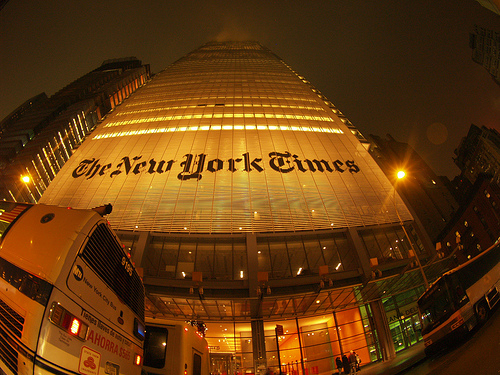
In November, the New York Times made another move to stay alive in a world that’s shifting to digital by running their first ever native print ad.
In case you’re not familiar, a native ad is an ad that matches the platform it’s hosted on in function and appearance. Unlike banner ads or sidebar ads, which clearly differ from their backgrounds, native ads are designed to blend in and often take the form of faux blog posts or infographics.
They’ve not been without criticism, either; some think that native ads are intentionally designed to deceive. I don’t disagree, but that’s hardly my biggest issue with newspapers like the Times and Washington Post before them running native ads in print.
I do have at least some problem with the way native ads (online or off) are designed. I don’t have much issue with a native ad, provided that its content is actually useful. All too often, however, as we saw with Shell’s ad in the Washington Post, these ads don’t give anything useful. They’re shills. The advertising isn’t the problem–it’s what much of social media is based on, after all. It would be one thing if this type of content was presented as an ad. But it’s not.
At this point, though, that’s all water under the bridge. Native ads are here for better or worse. The trouble is, this is clearly an attempt by newspapers to hop on board a trend that’s working online in an attempt to save their terrible fate.
Long after social media (especially Twitter) had completely disrupted the way news is presented, news outlets like CNN and even the Times attempted to fight back by migrating away from strong journalism and towards the Kardashians. (The 24/7 news cycle is also to blame for this.) Minus one for traditional media.
When social media was embracing free content from sources like Vox, Medium and even Buzzfeed, news media was just starting to utilize the paywall as a method of driving subscribers who want to pay for premium content.
Most recently, long after websites and other news platforms had adapted native advertising to bring in revenue, a few newspapers have tried to keep profits up by introducing native print ads. It’s not hard to see that for the last several years–perhaps more–newspapers and their affiliates have been significantly behind the power curve in terms of what’s in and how to use it more effectively.
Newspapers and their parent companies definitely still have their place in the world, but for quality, premium content–not for shoddy knockoffs of concepts that social media is putting to use. If newspapers are going to continue to try to battle social media with things like native ads, they are going to lose. (And again, in fact, in many ways, they already are.) As history has proven time and time again, by the time you realize your industry is being disrupted, it’s already too late. Native print ads are not the answer to the New York Times Innovation Report.
There may soon be a day when newspapers are leading the way in innovation, giving cues to social media instead of taking them. But as this recent news about native ads going to print shows, today is not that day.
photo credit: alextorrenegra via photopin cc



